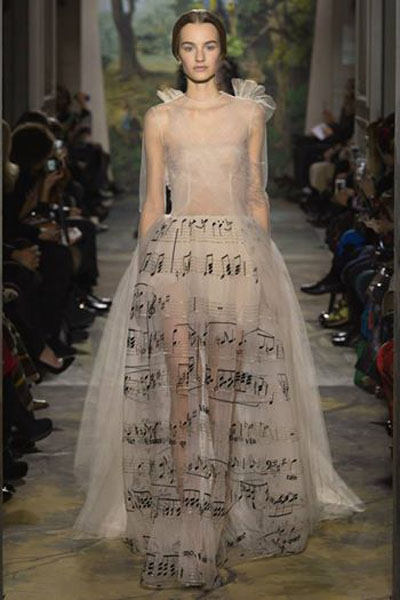
International environmental organization Greenpeace is putting pressure on eight luxury fashion brands to revise their production processes after finding toxic chemicals in their apparel and accessories.
Greenpeace studied 27 children’s clothing and footwear items from luxury brands, finding that 16 of those contained one or more hazardous chemicals. With luxury consumers aware of the environmental impact of their clothing purchases, many luxury fashion houses may reform their practices to stay in good public opinion.
“Most consumers were not aware that these products contained hazardous chemicals before Greenpeace started the Detox campaign,” said Chiara Campione, The Fashion Duel project leader at Greenpeace, Rome, Italy.
“Together with fashion fans, parents and activists we have convinced 20 fashion brands, including luxury houses Burberry and Valentino, to listen and make landmark commitments to detox, cleaning up their clothes and changing the face of fashion for good,” she said.
“Luxury brands like Versace and Dolce & Gabbana that have yet to make a commitment to toxic-free fashion are deceiving its [sic] customers, hiding the presence of hazardous chemicals behind the glamour and dream-like mystery of its catwalk shows and fairy tale advertising. Without action, these supposed fashion trendsetters risk getting left behind as this wave of change sweeps the sector.”
This report focused entirely on eight luxury fashion brands: Dior, Dolce & Gabbana, Giorgio Armani, Hermès, Louis Vuitton, Marc Jacobs, Trussardi and Versace.
Fashion faux pas
The report, titled “A Little Story About a Fashionable Lie: Hazardous chemicals in luxury branded clothing for children,” is part of Greenpeace’s Detox campaign that aims to get apparel brands to commit to zero discharge of hazardous chemicals by 2020.
Previously, the organization conducted a similar study in Asia, which found NPEs on children’s clothing from a number of brands, including Burberry.
After the findings came out, Burberry responded with a “Commitment on Chemical Management in Manufacturing” pledge, which states its commitment to the detox. The house’s plan includes a transparency statement, which details how the brand will publicly disclose the chemicals released by its production on the Institute for Public and Environmental Affairs.
Among the 20 brands that pledged to the detox is Valentino, which released a document outlining its plan in February 2013. Valentino was commended by the organization, which now considers the fashion label a leader in the toxic-free fashion movement.
Valentino runway look from its spring 2014 couture show
Greenpeace tested garments for nonylphenol ethoxylates, or NPEs, which are manmade materials often used as detergents in clothing manufacturing. Once in the environment, the chemicals break down into nonylphenols, which are hormone disruptors that can cause cancerous tumors, birth defects and developmental disorders.
If NPEs are found on garments sold, then they were used in the manufacturing process, and would have likely been released into the environment in wastewater. There are existing restrictions for certain uses of NPEs in the European Union, the United States and Canada, with U.S. laundry manufacturers no longer using the chemicals.
Of the 27 garments studied, 12 came back positive for NPEs, with the highest concentration found in a ballerina shoe by Louis Vuitton, which was made in Italy.
Five of five items tested for per- and polyfluorinated chemicals, or PFCs, came back positive. PFCs are used to waterproof items, and can affect development.
The highest concentration of volatile PFCs was found in a Versace jacket.
Phthalates were found in all of the five items tested. These chemicals are used to plasticize items, and are similarly hormone disruptors.
Antimony was found in all of the polyester items studied. The chemical has been linked to dermatitis, respiratory tract irritation and interference with the immune system.
In a branded statement, Louis Vuitton said, "The safety of our customers and the protection of the environment are long-standing priorities for Louis Vuitton, and we take this very seriously. All of our products are safe and that the company fully adheres to international environment and safety standards, including the children's ballerina shoes and sneakers that Greenpeace tested.
"Louis Vuitton shares Greenpeace’s concerns and are continuously willing to enhance our policies and protocols to go above and beyond current environmental standards and regulations. We have an active program dedicated to minimizing the environmental impact of its supply chain, and requests all our suppliers to comply with the most stringent environment and safety regulations."
Changing environment
The report's indictment can be turned into a rallying point for brands looking to rid toxins from their production process.
Helping the environment, however small the initiative, helps luxury brands appeal to eco-conscious consumers.
For instance, Italian label Bottega Veneta flaunted eco-friendly, limited-edition handbag collection available for purchase and showcased the winner of its photography contest to drive foot traffic to brand boutiques during U.S. Fashion’s Night Out events.
The brand previewed its line of eco-friendly handbags, 100 of which were available for purchase in its New York flagship store on a first-come, first-serve basis during the Sept. 6 event (see story).
Also, Four Seasons Resort Maui at Wailea, HI, is expanding its environmental initiatives with a limousine service featuring the all-electric Tesla S 85 sedan that ferries guests from the Kahului airport to the resort and other ventures.
As part of the “Going Green” initiatives, the hotel is able to set the stage for a trip that emphasizes the environment’s importance by welcoming guests with a eco-friendly ride as soon as they arrive. As more brands begin to embrace green initiatives, guests will likely become more demanding in their preferences for environmental accountability (see story).
“Greenpeace is calling on the companies identified in this report to recognize the urgency of the situation and become Detox leaders, committing to zero discharge of hazardous chemicals by January 1, 2020,” Ms. Campione said.
“This commitment should include ambitious and achievable timelines that will lead to the swift elimination of hazardous substances and be followed through with credible actions,” she said.
Final Take
Sarah Jones, editorial assistant on Luxury Daily, New York

